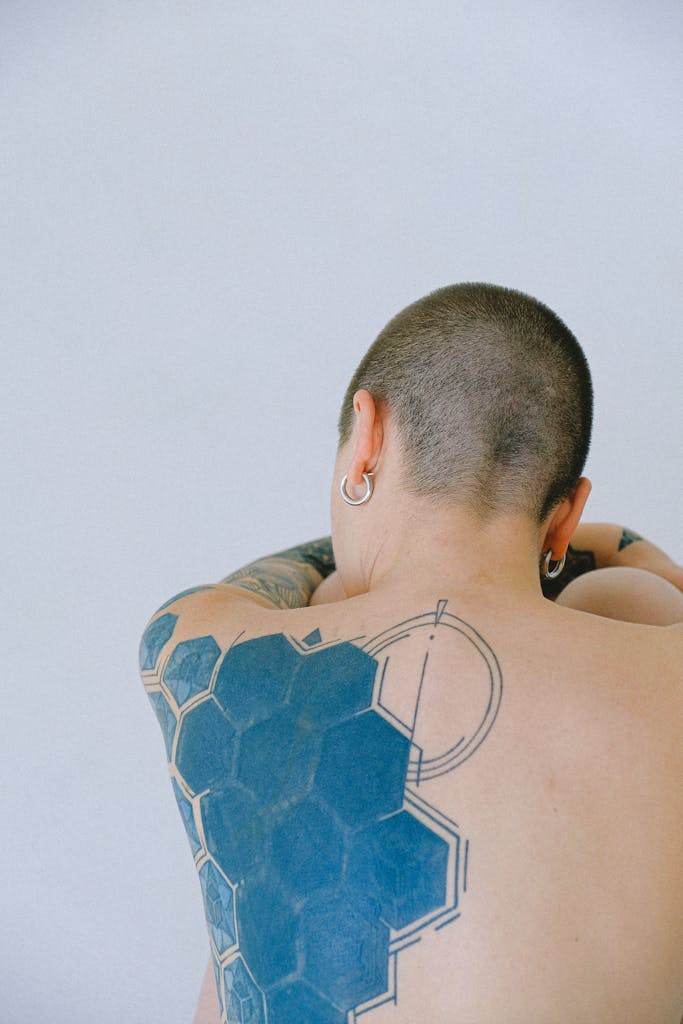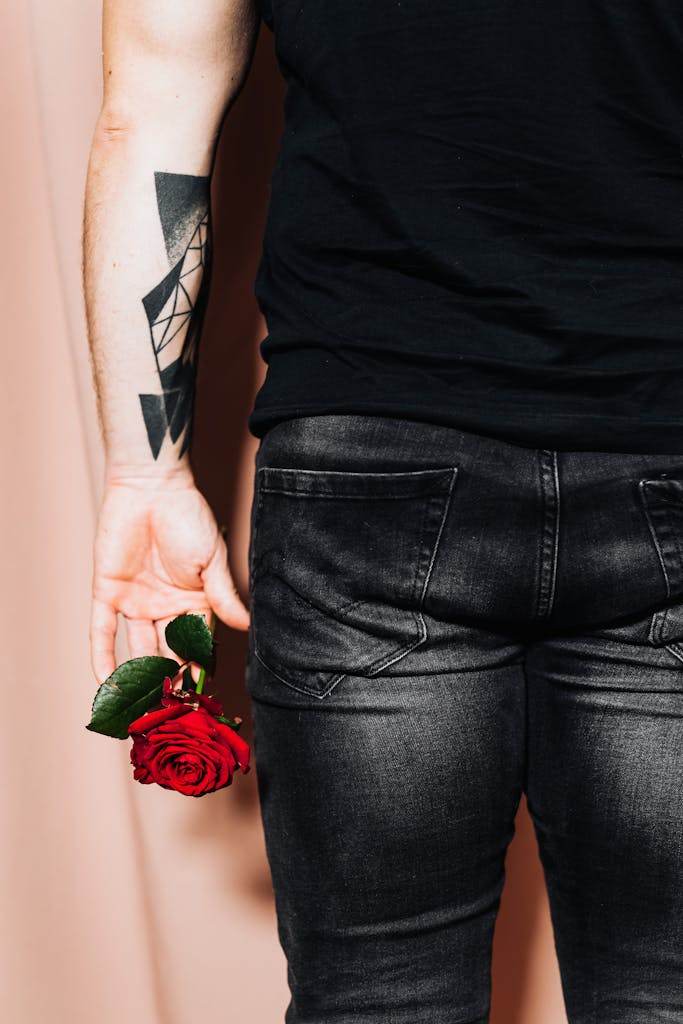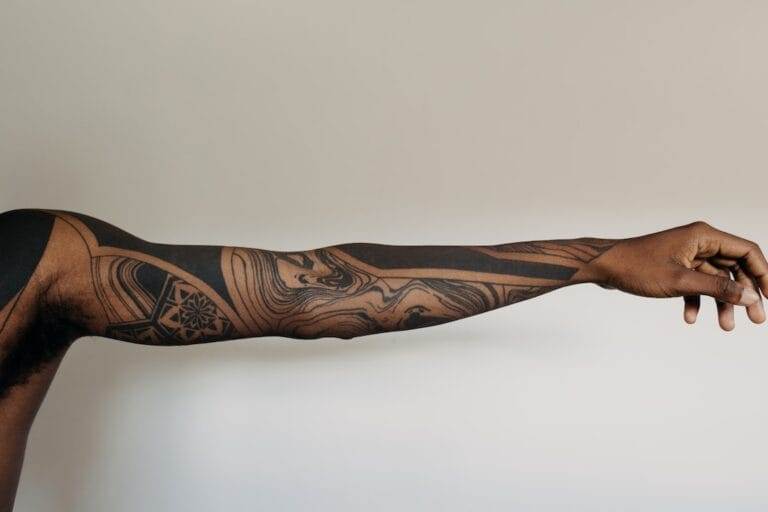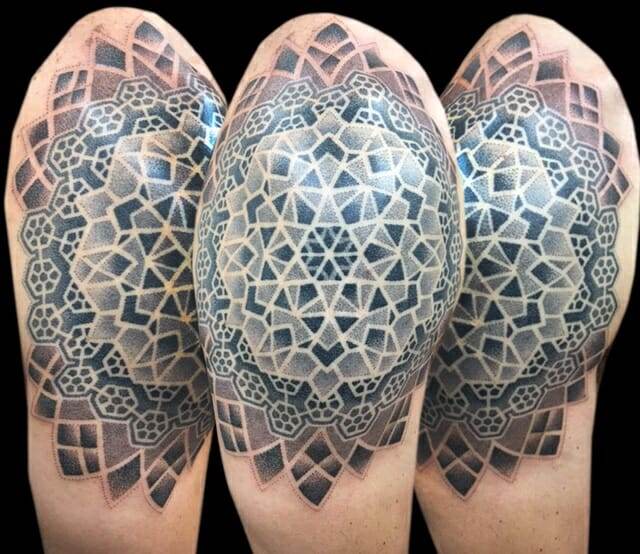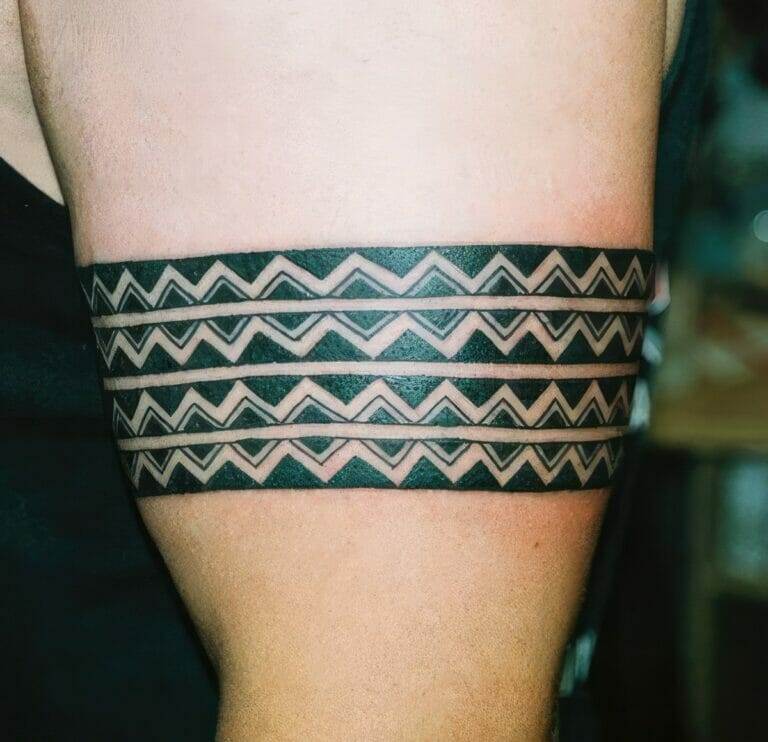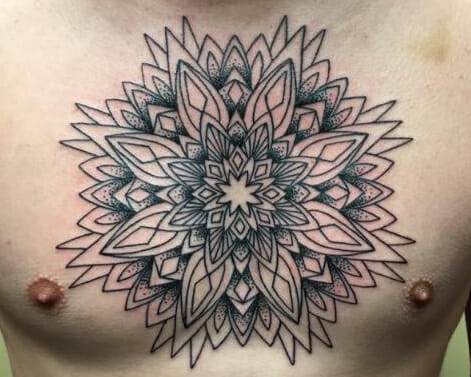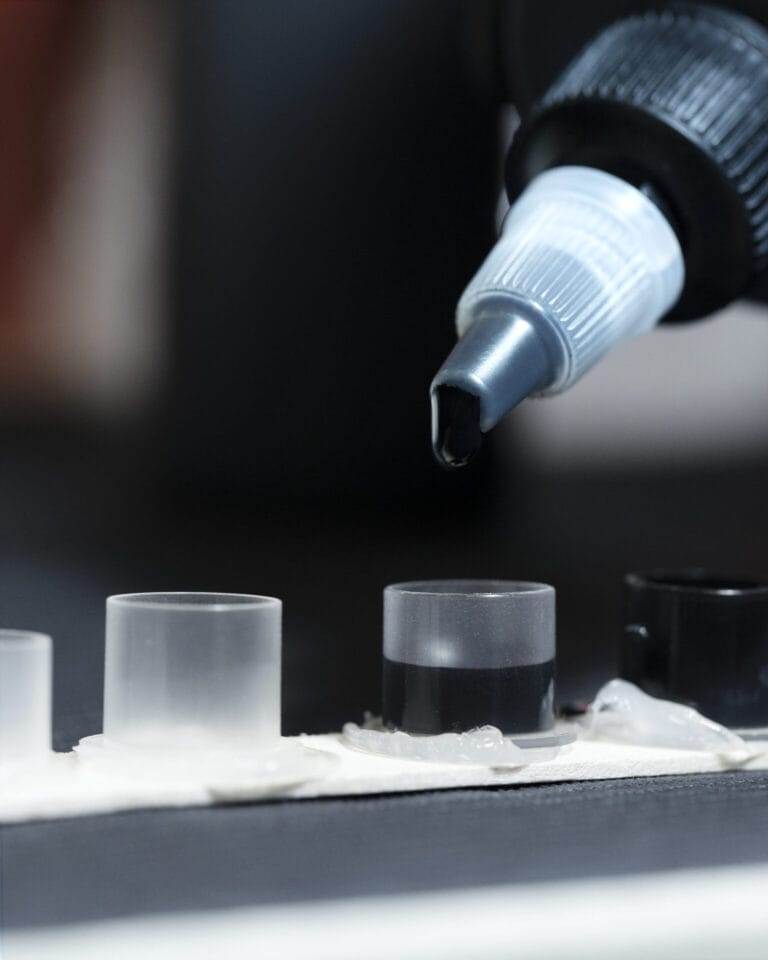
Introduction
Brief History of Geometric Tattoos
Geometric tattoos have a rich history that spans across various cultures and time periods. Originating from ancient civilizations, these designs were used not only as body art but also as a form of storytelling, belief systems, and social identity.
- In ancient Egypt, geometric patterns adorned the bodies of the elite, symbolizing status and power.
- Polynesian cultures utilized intricate geometric designs in their tattoos to signify tribal affiliations and life milestones.
- The Romans and Greeks incorporated geometry into their art, emphasizing the beauty of perfect shapes and patterns.
Throughout time, these tattoos have evolved, yet their core essence—using shapes to convey meaning—remains ever-present.
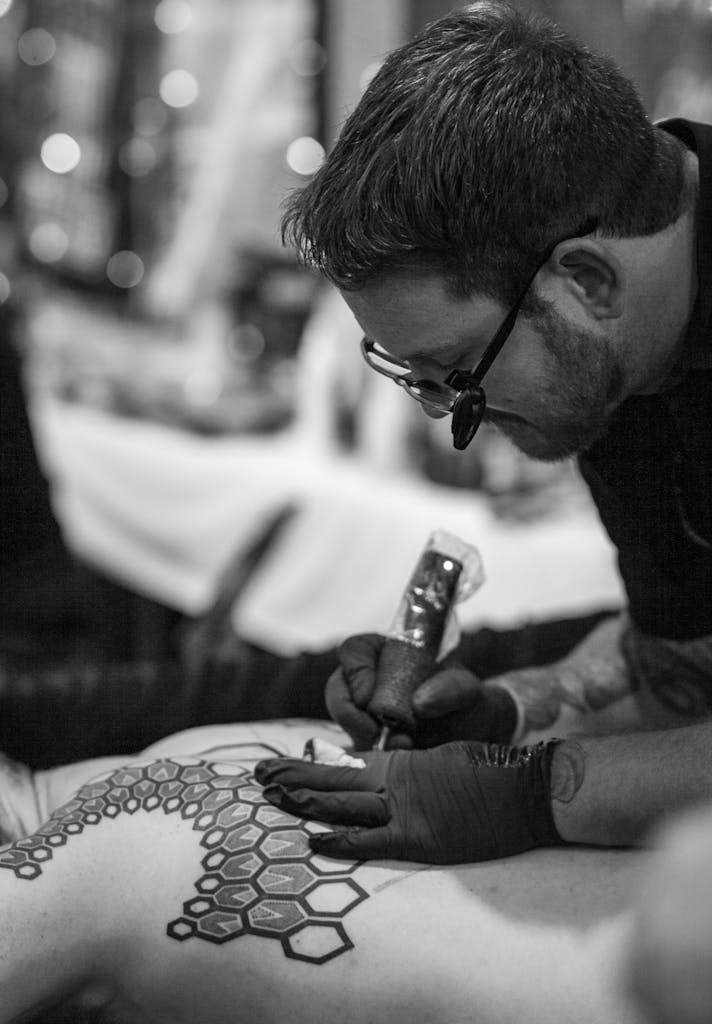
Importance of Precision and Symmetry in Body Art
Precision and symmetry play pivotal roles in the appeal of geometric tattoos. These elements not only create visually striking designs but also evoke a sense of balance and harmony.
- Precision: Accurate line work and angles are crucial in geometric tattoos, ensuring that each element aligns perfectly.
- Symmetry: Symmetrical designs often convey a feeling of equilibrium. This is particularly significant in body art, as harmonious tattoos can have a calming effect on the viewer.
These qualities, combined with the rich history of geometric tattoos, help individuals connect personally with their designs, making each piece a unique expression of identity and artistry.
Elements of Geometric Tattoos
Shapes and Patterns
When it comes to geometric tattoos, the diversity of shapes and patterns is truly mesmerizing. From simple triangles and circles to complex polygons and tessellations, each shape carries its significance, making it an integral part of the design.
- Triangles can represent strength or change, while circles often symbolize unity and eternity.
- Hexagons are frequently associated with harmony and balance, echoing nature’s patterns (think honeycombs!).
- Tessellations create mesmerizing visuals, showcasing a repetitive pattern that can draw the eye and engage the mind.
By combining these shapes, tattoo artists craft intricate designs that resonate on both aesthetic and personal levels.
Lines and Symmetry Techniques
Lines are the backbone of geometric tattoos, establishing structure and form. The use of various line techniques enhances the overall impact of the artwork.
- Bold Lines: These create strong outlines and help the shapes stand out.
- Thin Lines: Often used for delicate details, they add sophistication and intricacy.
Utilizing symmetry techniques also plays a crucial role. Symmetrical designs can convey stability and order, while asymmetry might introduce a dynamic element, providing depth to the tattoo.
- Radial Symmetry: Expands outwards from a central point.
- Bilateral Symmetry: Reflects across a central axis, offering balance.
Together, these elements create tattoos that captivate and communicate personal meanings, ensuring every piece is not just art but a story waiting to be told.
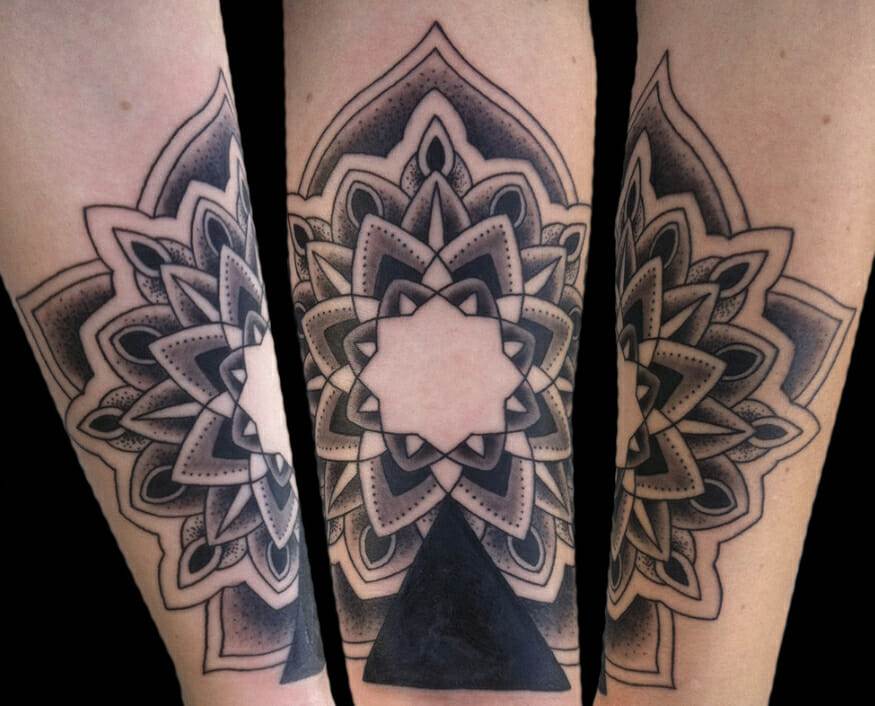
Popular Geometric Tattoo Designs
Mandala Tattoos
One of the most celebrated geometric tattoo designs is the mandala tattoo, which is rich in cultural and spiritual significance. Originating from ancient Indian traditions, mandalas are often associated with meditation, representing the universe and the journey of the soul.
- Intricate Patterns: Mandala tattoos feature complex arrangements of shapes that radiate from a central point, creating a sense of balance and harmony.
- Symbol of Wholeness: Because they encapsulate the idea of completeness, many individuals choose mandala tattoos to signify personal growth or spiritual enlightenment.
Often seen on various body parts such as the back, shoulders, or forearms, these tattoos serve as both decorative pieces and deeply meaningful symbols.
Sacred Geometry Tattoos
Another popular category within geometric tattoos is sacred geometry. This style incorporates shapes and patterns that hold spiritual significance, often drawing upon mathematics to convey deeper meanings.
- Fibonacci Spiral: A design symbolizing growth, beauty, and the interconnectedness of life.
- Flower of Life: This ancient symbol portrays the fundamental patterns of creation and is often selected by those seeking a connection to the universe.
Sacred geometry tattoos can evoke a sense of wonder and mystery, as they illustrate the profound relationship between nature and mathematics. Frequently adorned on larger areas of the body, these designs are perfect for anyone looking to make a bold statement while exploring the depths of spirituality and nature’s beauty. Each tattoo radiates a unique energy, inviting personal reflections on one’s path in life.
Placement and Sizing Considerations
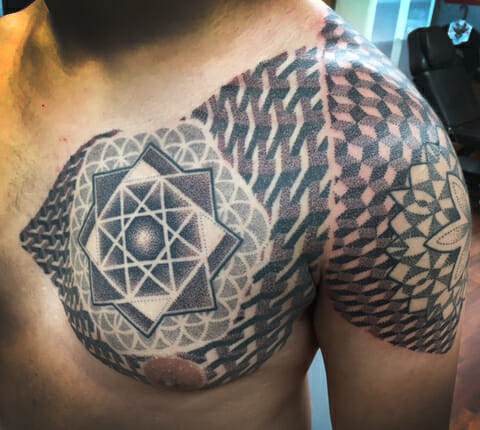
Best Body Areas for Geometric Tattoos
When it comes to geometric tattoos, placement is crucial for both aesthetics and personal expression. Certain body areas can enhance the design, allowing the artwork to flow with the natural contours of the body.
- Forearms: Ideal for showcasing intricate designs, giving an open canvas that can be easily seen and appreciated.
- Back: A larger area allows for expansive designs, perfect for elaborate mandalas or sacred geometry tattoos that require more detail.
- Shoulders: This area offers a smooth surface, ideal for symmetrical designs that wrap around and create stunning visual effects.
- Legs: Thighs and calves can accommodate larger pieces, or they can be used for smaller, more delicate designs that can be cleverly integrated into movement.
Choosing the right placement can elevate the impact of any geometric tattoo, making it a visually arresting centerpiece.
Importance of Size and Proportion
Size and proportion are equally essential in achieving balance within a geometric tattoo. When considering size, it’s important to think about how the tattoo will interact with your body.
- Small Designs: These work well on areas like the wrists or ankles, offering subtlety while still making a personal statement.
- Large Designs: Best suited for broader areas like the back or chest, large tattoos can captivate attention and create a striking visual narrative.
- Proportion: It’s vital to ensure that the size of the tattoo complements the body part chosen. Proper proportions help maintain the design’s integrity and ensure that it doesn’t look out of place or overwhelming.
Ultimately, thoughtful placement and sizing are integral to making your geometric tattoo both personal and visually impactful, accentuating the beauty of the design while complementing your body.
Color Choices in Geometric Tattoos
Monochromatic Designs
When it comes to color choices in geometric tattoos, monochromatic designs offer a timeless elegance. Using different shades of a single color, these tattoos can create depth and dimension while maintaining a sleek, unified look.
- Solid Black: This classic option highlights the precision of the lines and shapes, making it a popular choice for those who appreciate bold contrast.
- Greyscale: By incorporating subtle gradients, greyscale designs can evoke a more dynamic feel while still adhering to a minimalist aesthetic.
Monochromatic designs are often favored for their versatility; they can seamlessly align with various personal styles—and they age gracefully over time, ensuring longstanding satisfaction without frequent updates.
Vibrant Color Combinations
On the other end of the spectrum, vibrant color combinations can infuse energy and personality into geometric tattoos. By leveraging multiple colors, artists can create stunning visuals that stand out and capture attention.
- Color Palettes: Rich hues, like deep blues, fiery reds, or bright yellows, can create eye-catching contrasts, helping to emphasize specific parts of a design.
- Gradients: Blending colors can add a sense of movement and fluidity, offering a modern twist to traditional geometric patterns.
Choosing vibrant colors allows individuals to express their unique personality and creativity. Whether it’s a bold statement piece or a colorful accent, the use of color can dramatically alter the emotional impact of a tattoo, making it not just visually appealing but also a reflection of personal identity and storytelling. Each color choice contributes to the overall narrative, inviting viewers to linger and discover the layers embedded in the artwork.
Famous Geometric Tattoo Artists
Their Signature Styles
In the world of geometric tattoos, certain artists have distinguished themselves with unique signature styles that captivate clients and inspire other tattooists. These artists often have hallmarks that reflect their interpretation of geometric shapes and forms.
- Intricate Detailing: Many renowned geometric tattoo artists emphasize delicate lines and complex patterns that create a sense of depth and sophistication.
- Play with Negative Space: An intriguing style utilized by several artists involves leveraging negative space, allowing the skin to break up patterns and enhancing the overall design.
- Blend of Styles: Some artists seamlessly merge geometric designs with organic elements, creating a captivating contrast that showcases both precision and fluidity.
Their signature styles not only define their artistry but also contribute to the broader aesthetic of geometric tattoos.
Influence on Contemporary Body Art Trends
These artists have significantly impacted contemporary body art trends, making geometric tattoos more popular and accessible across various demographics. Their ability to push boundaries has encouraged more individuals to explore geometric designs, blending them with cultural symbols or personal narratives.
- Increased Popularity: The influence of geometric tattoo artists has skyrocketed interest in body art, leading to a surge in custom design requests.
- Innovative Techniques: By introducing new methods and styles, these artists have paved the way for experimentation within the tattoo community, encouraging creativity and personalization.
Through their unique approaches, these influencers have reshaped the landscape of modern tattooing, establishing geometric art as a powerful means of self-expression that resonates with individuals from all walks of life. The ripple effect of their creativity continues to inspire both tattooists and enthusiasts alike.
Geometric Tattoo Aftercare Tips
Proper Healing Process
Taking care of your geometric tattoo during the healing process is essential to ensure it looks fantastic for years to come. The initial healing phase typically lasts about two to three weeks, and following proper aftercare guidelines is crucial.
- Keep It Clean: Gently wash the tattoo with mild soap and water at least twice a day. This helps to remove any bacteria while promoting healing.
- Moisturize: Apply a thin layer of fragrance-free, gentle moisturizer or tattoo-specific lotion to keep it hydrated. This prevents excessive dryness and itching.
- Avoid Sun Exposure: Direct sunlight can damage the healing skin and fade the ink. It’s advisable to keep your tattoo covered or use a high-SPF sunscreen once healed.
During the healing process, avoid picking at scabs or peeling skin; this can compromise the design and lead to uneven healing.
Long-Term Maintenance Advice
Once healed, long-term maintenance is key to preserving the vibrancy and integrity of your geometric tattoo. Here are a few essential tips:
- Sunscreen Application: Always protect your tattoo from UV exposure by applying sunscreen regularly, especially during outdoor activities.
- Moisturizing: Keeping the skin moisturized not only helps enhance the tattoo’s appearance but also maintains skin health.
- Regular Touch-Ups: Depending on the tattoo and your skin type, consider periodic touch-ups every few years to refresh the design and prevent fading.
By adhering to these aftercare and maintenance tips, you can ensure your geometric tattoo remains a striking piece of art, continuously reflecting your identity and personal story. A well-cared-for tattoo not only looks impressive but also holds the memories and meanings behind its creation.

